- Developer: Omega Force
- Publisher: Koei Tecmo
- Release date: 24th June 2021
- Genre: Hack and Slash
- Platforms: PS4, Xbox One, Switch, PC
- Reviewed on: PS5
- Game Supplied by: Publisher
It has been seven long years since the last Samurai Warriors game
I have long been a fan of the Samurai Warriors games, as there is a methodical, simple brilliance to the 1 vs 1000 gameplay. It’s not just about defeating the enemies, the joy comes from doing so with an ever-increasing combo count. Playing the game this way, as it’s intended, alters how you look at the battlefield. The enemies on the field are not merely there to be defeated to the last man – they are tools to be used for your enjoyment as you strive to gain higher and therefore more powerful combos. Within a couple of missions, I’d already stacked up a ridiculous 10,000 hit combo and had a beaming smile of seismic proportions to match.
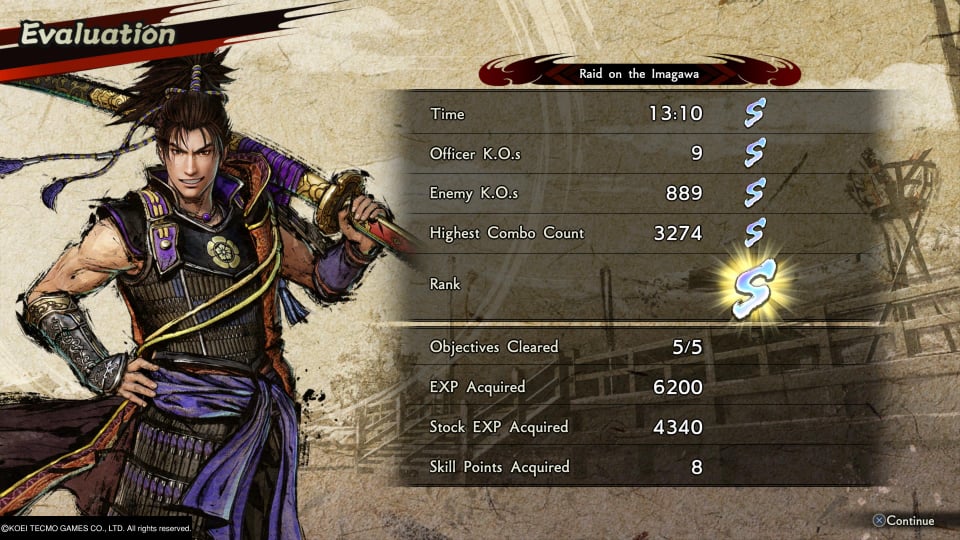
Samurai Warriors 5 is a cathartic experience, a simple fun game that you can lose yourself in, both in the gameplay and the story to accompany it. That for me is synonymous with the franchise, and anything within the game that breaks this spell would not be welcome, but unfortunately, an aspect of this game does just that.
Excellent Storytelling.
The main draw of the game is the 30-hour long story mode, and I found it fascinating to have such an excellently presented, gripping yarn about a period of Japanese history to dive into. I really feel like I learnt about the Sengoku period and the main players of it whilst playing not just this Samurai Warriors game, but also the previous games too. This particular game focuses on what some would argue are the series villains: Nobunaga Oda, and Mitsuhide Akechi.
Each mission begins with an introductory cinematic, conversations in the build-up to an upcoming battle, the fight itself, then more cinematics afterwards. Each level is a beautifully crafted episode that is jam-packed full of interesting dialogue and political intrigue, based around real-world events of the time.
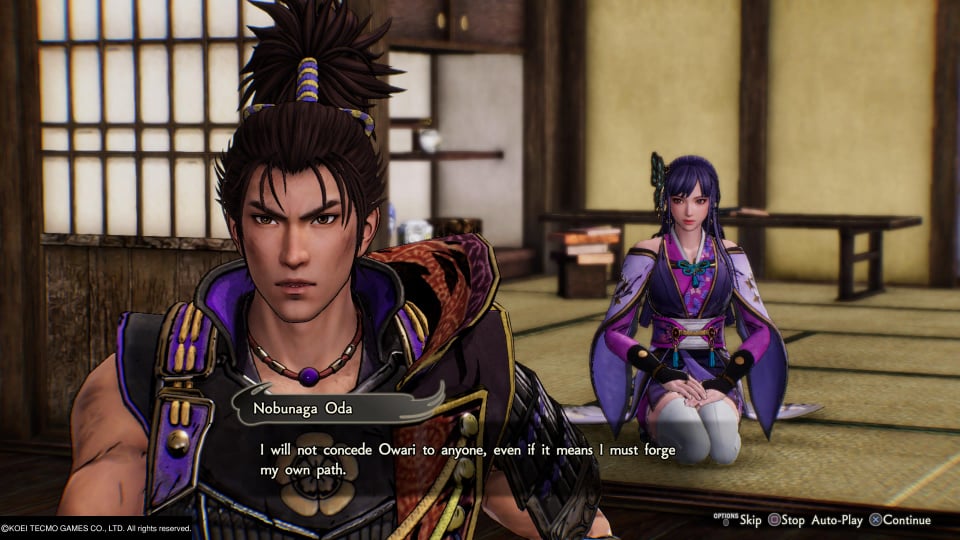
The first problem to be encountered, however, is that some of the important dialogue is spoken during the heat of battle, and only in Japanese. The issue here is that it’s almost impossible to read the text of what is being said whilst fighting at the same time. At first, I thought most of the dialogue wouldn’t be important and nothing more than one side insulting the other. However, to my dismay, during one mission I discovered I’d missed critical information during the battle, that my primary target had already left the battlefield. It’s frustrating because I feel like I was missing out on so much important information during battle.
Samurai Warriors is as Samurai Warriors does
Frustrating presentation aspects aside, the core of Samurai Warriors 5 is still the same gorgeous fun synonymous with the series. Although the game has 27 playable characters, you will spend a good 90% of the time with just the main two protagonists. You do have the option of using more during story mode, and in the game’s Free Mode, but I was wary of doing so due to the game’s forced upgrading system (More on that in a moment).
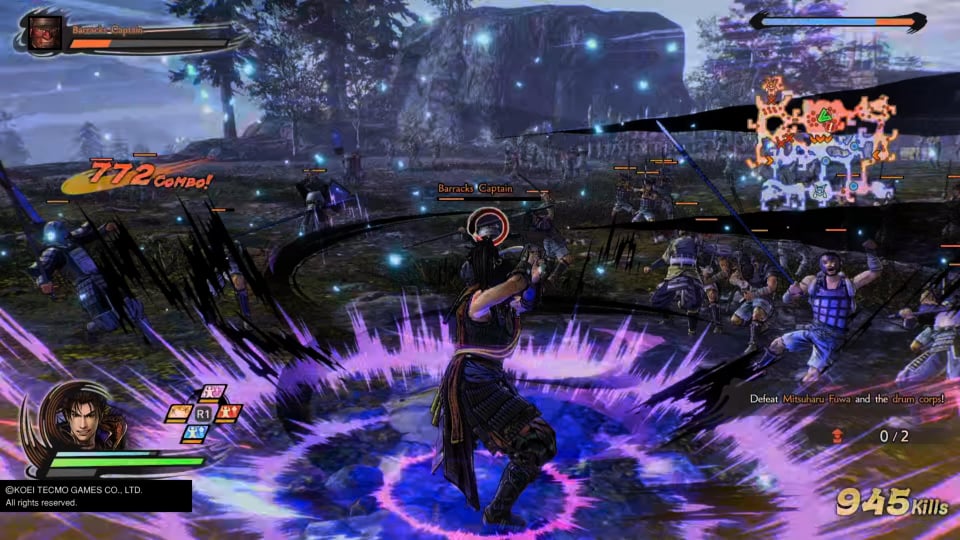
Each player has specific weapons that only they can use, and the more you use the same person with the same weapon, the more combo moves are unlocked. For example, five square-button presses are soon upgraded to upward of 7 to 9, with each extra press, unleashing a new, stronger variant of an attack. It’s very addictive to see how these new move sets improve over time simply by being used.
Landing hits build up a gauge that allows players to unleash a fantastic over the top Musou power move, complete with satisfying cinematic. A new feature however is the four ultimate skills, which can be assigned by the player to suit their style but have cooldowns after use. The skills can range from a short burst of extra power to a speedup, or an extra ability to hit enemy officers harder. These skills add an excellent extra layer of tactical use and make a welcome addition to the gameplay.
However, for all the good that Samurai Warriors 5 does with the combat and varied playstyles of the various playable characters with their unique weapons, it undoes a lot of this with its frankly hideously forced upgrading system.
To upgrade almost everything in the game in story mode, you will need to farm for items in the game’s secondary mode called “Citadel Mode”. Citadel Mode is pretty much a tower defence mode, which is just more of the same combat but with no real story to speak of. The problem here is that to get higher levels of basic weapons to complete the story mode, you have to use a lot of resources to be able to do so, some of which can only be found in Citadel Mode. For example, if you want to upgrade your weapon, you first have to upgrade the blacksmith to do so, while also having to upgrade the building he is in before you can then get to upgrade the actual weapon!
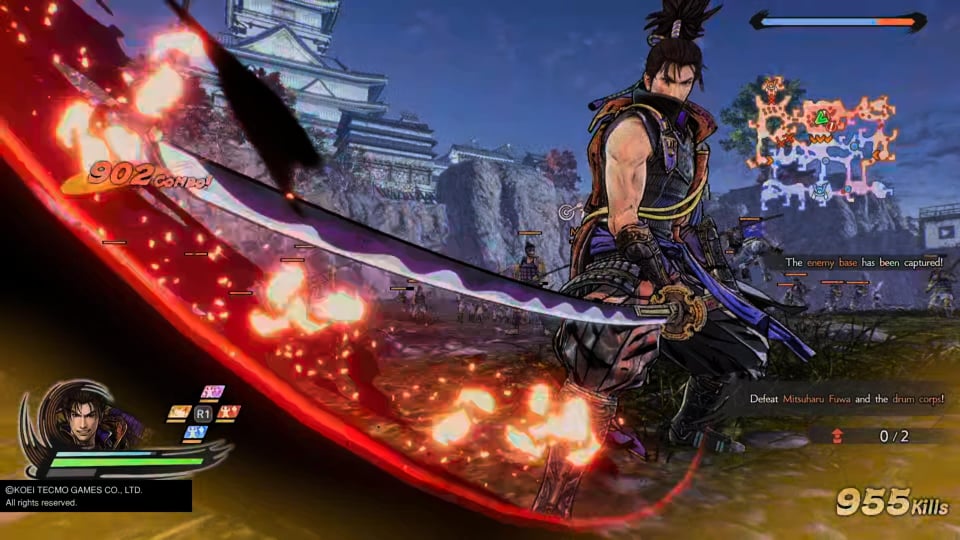
If you decide not to do this, then you can still complete the story missions, but to save your thumbs from being bashed to death, it’s best to knock the game’s difficulty down to easy, rather than laboriously chip away for hours on end with underpowered weapons against health sponge enemies on the normal difficulty. In short, it becomes a chore with underpowered weapons, rather than something to be enjoyed. There is nothing inherently wrong with citadel mode, and it’s quite a lot of fun when you do fancy playing it. The problem lies in the fact the game forces you to remove yourself from the story and into Citadel Mode just to acquire the items to afford the upgrades to play through the story mode comfortably. Previous Samurai Warrior games have also had secondary modes, but none of them forced the player to have to play them to continue.
Then, even when you do gather resources to upgrade your characters skill trees, dojo, weapons and skills, there is such a vast array of methods and paths to choose, you are never quite sure what the best course is as most upgrades look inconsequential. The game seems to get lost in its own upgrading self-importance. To compound this further, because you are never sure which characters you will be able to use in future missions; rather than upgrade a new character you like who you may not get to use, you tend to just upgrade the ones you know you’ll probably need, thereby using the precious resources you have on characters you may not want to use them on.
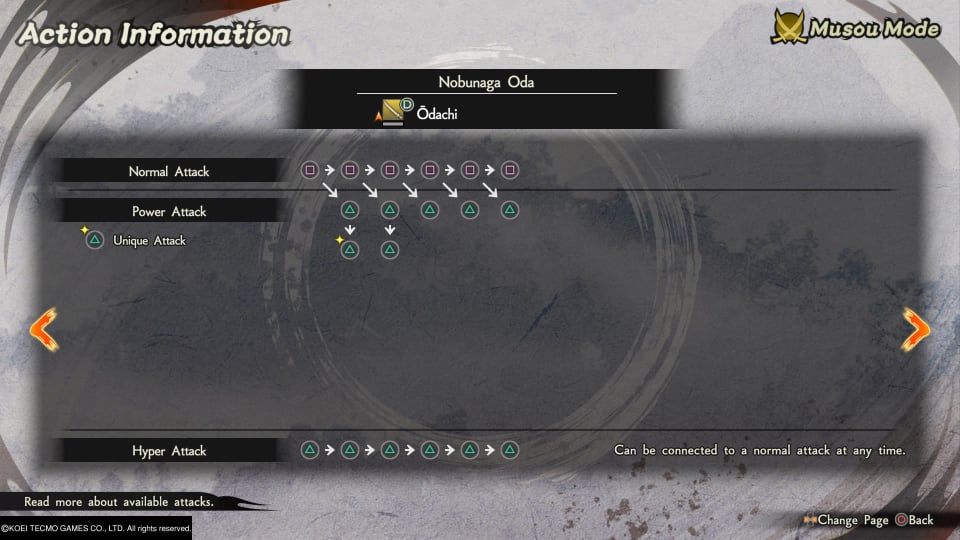
Looks and sounds amazing.
Apart from the forced upgrading system, there isn’t really anything wrong with Samurai Warriors 5. In fact, one of the best aspects (aside from the storytelling) is the gorgeous new art style of the visuals and the incredible soundtrack and effects during the game.
Inspired by Japanese art, the new semi cell-shaded look is very interesting to look at and works with super smooth animations. At times the colour palette got confusing when the characters got lost in the detailed backgrounds, but it’s a beautiful game to look at either way. The highlight was undoubtedly the smooth combat gameplay and the fantastic cinematic power moves. Even when you have watched them a thousand times from the same character, it never gets old, and it was still satisfying to watch them drop a move with a flourish on top of hundreds of enemies.
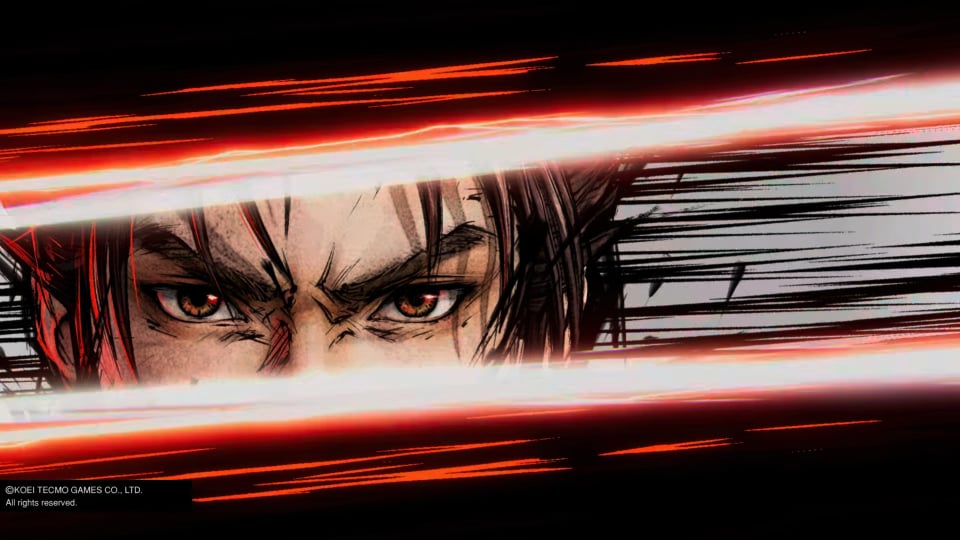
With a mix of traditional and contemporary instruments, the authentic but heart-racing music pushes the player along during combat. Then, for the slick presentation cinematics, the music calms things down but with a vast grandeur of sweeping majestic flowing music that sets the feel of a big-budget film presentation. The sound design is utterly intoxicating.
Finally, the sound effects for each character per battle per weapon are some of the finest examples of why the sound in hack and slash games is so important. Each blow landed sounds hefty and satisfying, from the slash of a katana to the twang of a bow, you feel it through the sound alone.
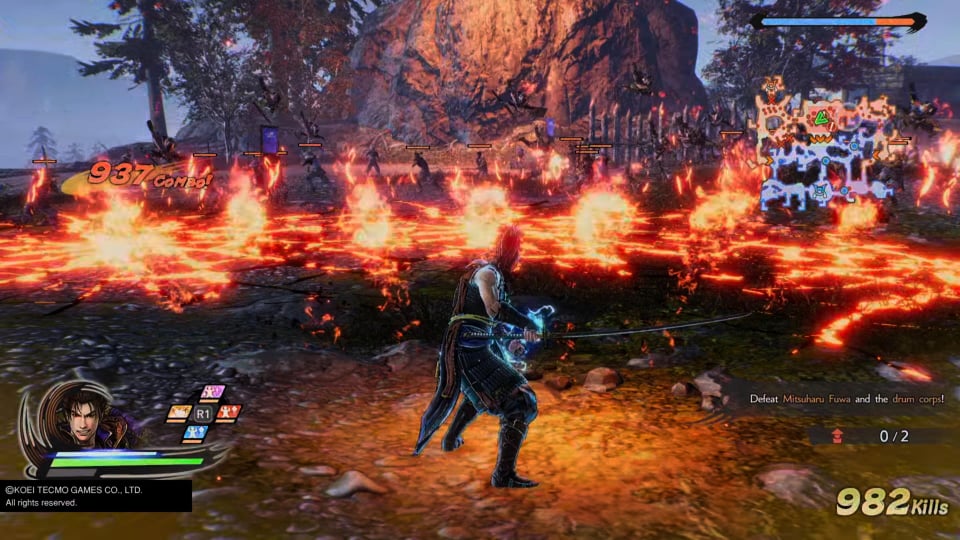
Summary
Samurai Warriors 5 is a shining example of a simple idea executed to perfection. Simple but satisfying gameplay is mixed with a gripping tale that is presented in such style that it’s fascinating to watch. If the game didn’t drag itself down to a stop via the forced upgrading system, this would have been magnificent. As it is, however, where the player is forced to grind out resources outside of the story to state the game’s upgrade system, it downgrades our overall impression of the game from excellent back down to good.

